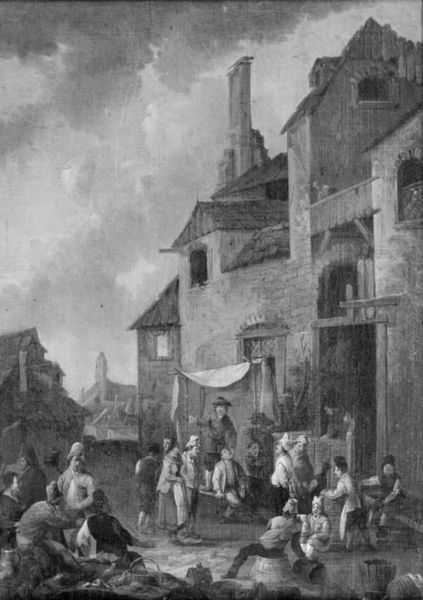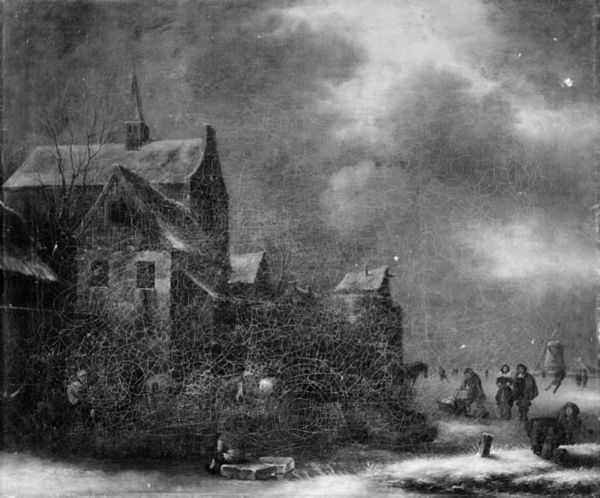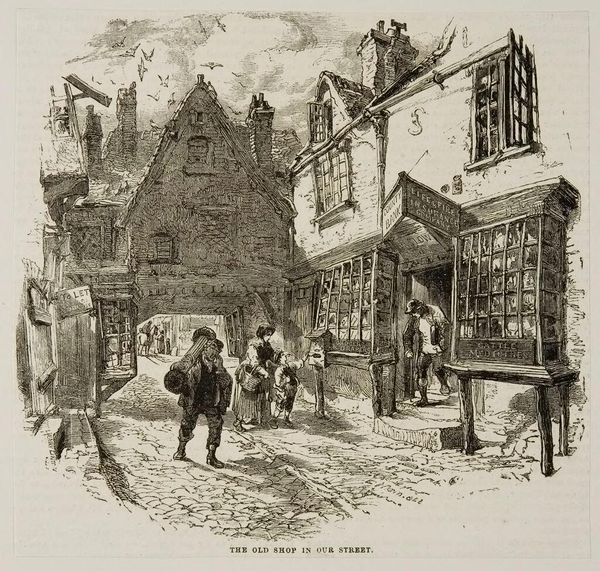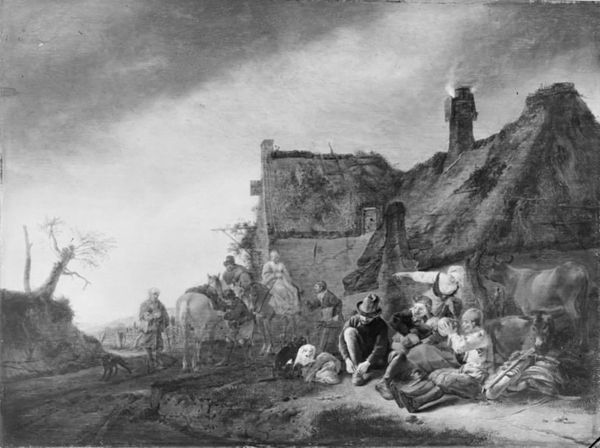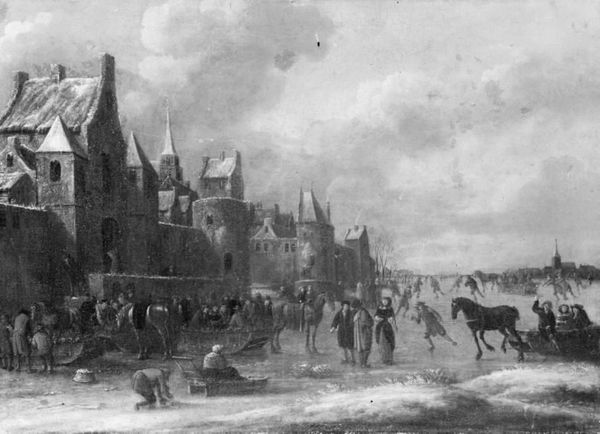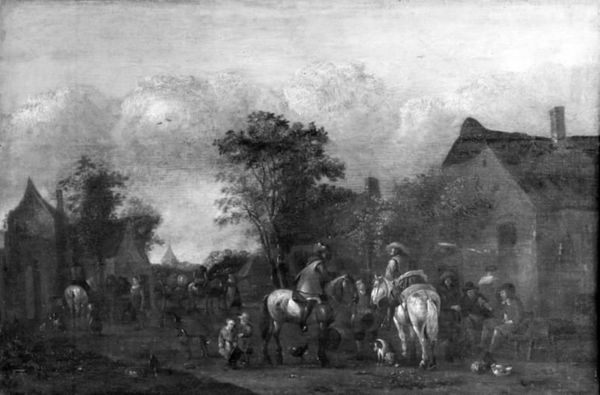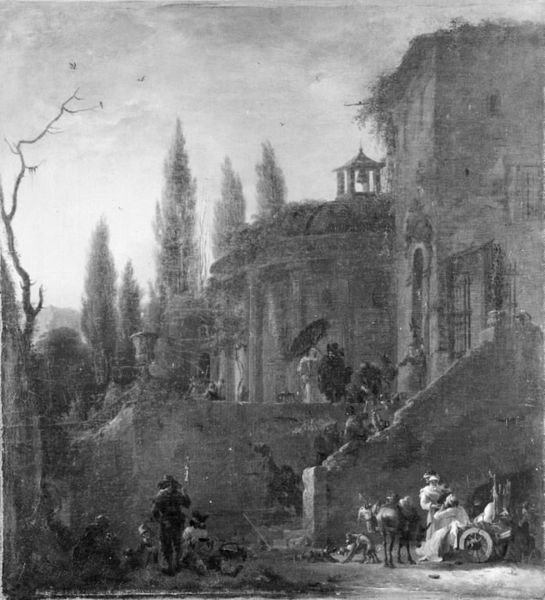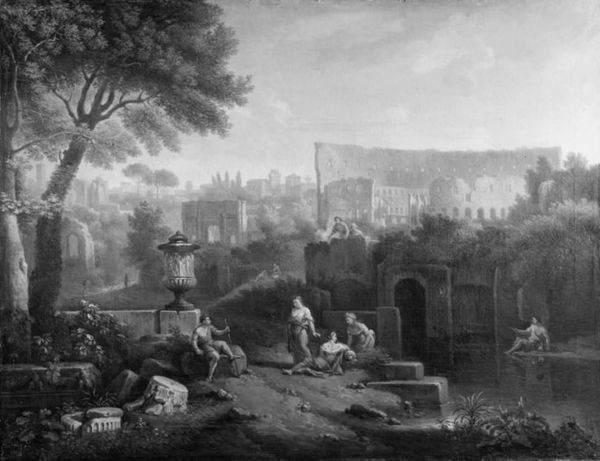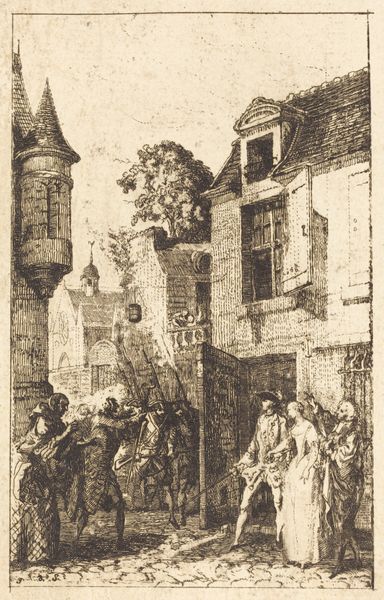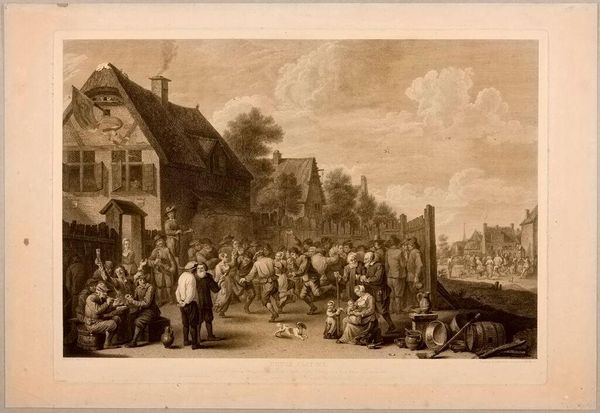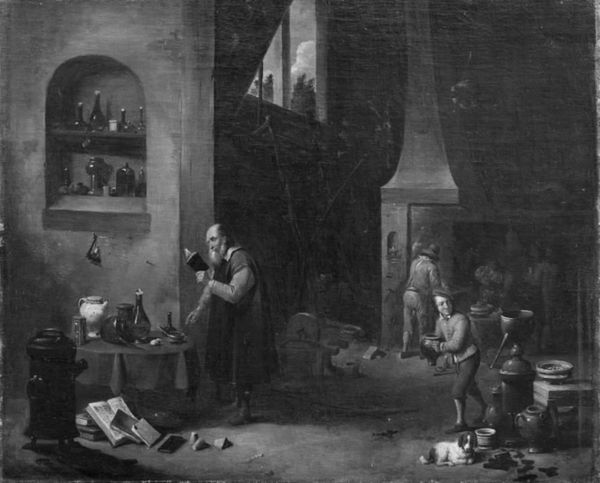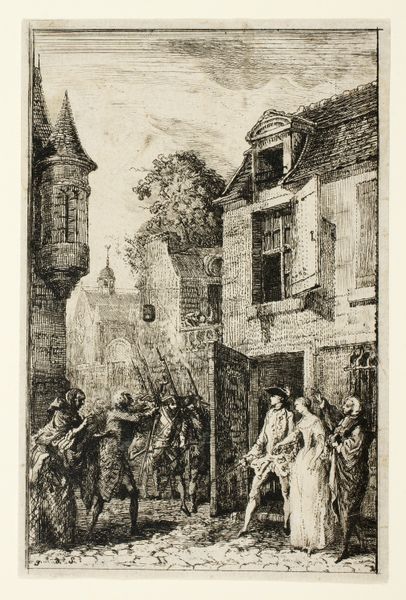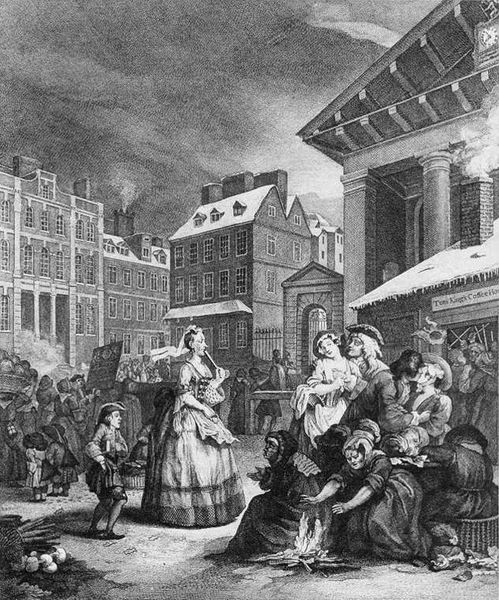
painting, oil-paint
#
baroque
#
painting
#
oil-paint
#
landscape
#
genre-painting
#
monochrome
#
monochrome
Dimensions: 30.5 cm (height) x 22.3 cm (width) (Netto)
Curator: Upon initial viewing, this monochromatic painting presents a melancholic atmosphere. The figures huddle in what appears to be a scene of desperation. Editor: Indeed. We're looking at "The Interior of a Village. Card Players," an oil on canvas work attributed to Johann Graff, dating approximately from 1668 to 1710. It resides here at the SMK, the Statens Museum for Kunst. Curator: The composition, while seemingly chaotic at first glance, presents a distinct interplay between light and shadow, and it guides the eye through a deliberate path, stopping here and there at huddled figures under a tent-like structure and those strewn about in what seems like utter dejection. The high horizon line amplifies the claustrophobic feel. Editor: Its societal context is important. During this period, genre paintings often served a dual purpose. While appearing to simply depict everyday life, they frequently functioned as moral lessons or commentaries on social issues. Card games, like the one suggested in the title, were often symbolic of folly, wastefulness, and moral decay. This artwork could thus be commenting on poverty, disease, or the broader social ills afflicting communities during this era. Curator: The formal language reinforces that interpretation. The use of monochrome certainly directs our focus on shapes, lines and form, highlighting contrasts. The somber tonality heightens the narrative weight of human suffering and degradation. You notice the angular architecture acting as vertical shafts? They are stoic witnesses to a squalid earthly reality. Editor: Considering the historical context, paintings like this helped construct and perpetuate certain narratives about village life and leisure. Were these representations accurate reflections of reality or vehicles for projecting the anxieties of the urban elite onto rural populations? The absence of color adds a level of austerity but also ambiguity, pushing interpretation into realms of archetype rather than strict realism. Curator: And in its formal construction we can observe Graff's sophisticated rendering of space and depth through gradations of tone. It isn’t merely reportage, but constructed—crafted using calculated design. Editor: So we are left to contemplate this scene and wonder: is this image merely illustrative of moral failings, or does it offer an empathetic lens through which we might better understand the social struggles of the time? Curator: I see it, more definitively, as the study of shadow – literal and metaphorical – expertly crafted into a singular work. Editor: Regardless, an undeniably evocative tableau.
Comments
No comments
Be the first to comment and join the conversation on the ultimate creative platform.
